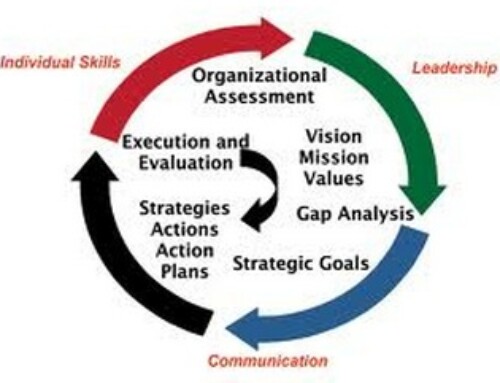 Advertising contrarian Bob Hoffman gave a talk at Matt Beall’s Hawaii Life Real Estate Brokers’ Worthshop 5 conference last week, which is a wake up call to real estate agents and brokers everywhere.
Advertising contrarian Bob Hoffman gave a talk at Matt Beall’s Hawaii Life Real Estate Brokers’ Worthshop 5 conference last week, which is a wake up call to real estate agents and brokers everywhere.
Why are we spending so much time, energy and money marketing to 18-34 year olds when the greatest, wealthiest, most powerful spending group in the world in nearly every major product category is 50+ years old?
Remarkably, Bob helps us answer that question and a more important one: How should we be marketing to the over 50 crowd?
Full disclosure up front: The majority of the marketing world hates Bob Hoffman and thinks he’s dead wrong. The only problem with this is that all the facts and research say he’s right.
Why do we market to Millennials?
Bob has researched this extensively and his findings are jarring. His overall conclusion is that most marketers have a herd instinct: They are marketing to Millennials because everyone else is and somewhere there must be someone who has the facts and knows “why the hell we are doing this?”
Bob’s been looking for that someone and looking for the facts to support this movement, but has come up with contrary research at every step.
He cites Nielson, saying:
- People over 50 are the most valuable generation in the history of marketing
- They are responsible for over half of consumer spending
- They outspend the average consumer in nearly every product category: food, household furnishings, entertainment, personal care, etc.
- They account for 55 percent of all package goods sales and dominate 94 percent of consumer package categories
- They outspend other adults online two-to-one, on a per capita basis
- They buy about 60 percent of all cars
He also shared this nugget:
“You know how you see all of those Millennials in car commercials? Well, people 75 to dead buy six times as many cars as people 18-24.”
Then he dropped this statistical bombshell, met with gasps from the audience:
- People over 50 account for more than 70% of the wealth in the U.S. If they were their own country, they would be the third largest economy in the world – bigger than India, Japan and Germany.
The biggest problem, says Bob, is this:
- People over 50 are the target of only 10% of all advertising in the U.S.
Marketers are not over 50
Listening to Bob, you immediate start to ask yourself, why? Why is nearly everyone ignoring the most economically powerful generation ever?
He notes that a few decades ago, advertisers discovered it was a good strategy to market to the 18-34 year old crowd because they were the leading edge of a consumer revolution. This strategy is still the right one, Bob explains, except for the fact that these people are no longer young. However, marketers ever since have been continuing to target youth, instead of following this group, which is now over 50, and “the most powerful consumer group the world has ever seen,” but are no longer a significant target of advertisers and marketers.
Anyone who looks at the numbers realizes that we should be dedicating the lion’s share of our aim at this over 50 crowd, yet we don’t. Bob notes that embedded into the ad industry is a bias from “decades of prejudices and legends overwhelm(ing) simple, clear thinking.” The real reason is that these advertisers “hate old people: they like the excitement of youth.” Adding, “We can’t build a hot advertising career talking to old farts.”
Then a slide pops up during his presentation to reveal this striking statistic, which really says it all:
- The over 50 adult population of the U.S. is 42 percent
- The over 50 adult population of the advertising industry is under 6 percent
Bob explains that the advertising world has been “demographically cleansed of people over 50.”
Is it any wonder that advertisers are focused on the younger generation? It is what they know best because it is who they are.
How to reach the over 50 market
Fortunately, Bob offers some prescriptive recommendations to those who recognize the opportunity and want to market to people over 50:
- Talk to their interests, not their age: They are a very diverse group with lots of subgroups. They don’t want to be treated like stock characters. Apple does it well – they show how simple their products are to use.
- Avoid casting clichés: No more shots of Timmy and grandpa going fishing. No more silver foxes in bathtubs. They are not fragile grandmas and grandpas. People over 50 are not who we think they are: They invented the personal computer and they invented the Internet.
- Be careful on who writes your materials: A 21-year old copywriter probably has no clue how to talk to them, as they have never been 55.
- Don’t be afraid to be naughty: Most people over 50 don’t see themselves as grownups, many grew up smoking weed and they are hip. They probably would get a kick out of someone making fun of younger people. They are youthful.
- They are not just a collection of maladies: Don’t talk to them like they are a bundle of afflictions needing remediation. They are mostly healthy, wealthy and wise and want to have fun, not medicine.
- Be specific: They are just as likely to change brands as younger people, but change for different reasons. For example, when it comes to retailers, Baby Boomers are 60 percent more likely to choose something for practical reasons, so while they are image conscious, they are not to the same degree as younger people.
- Remember that they matter in every category: from dog food to donuts, they spend half of all dollars. Nearly every business in the world would benefit from significantly earmarking their advertising dollars to target this mature audience.
Bob concluded his presentation citing Forbes, which wrote that people over 50 are “the most ignored wealthy people in the history of marketing.” They are, he added, the group that will determine the success and failure of most products.
That list, my friends, also includes real estate.





I’ve been saying the same thing, but just in real estate. My thinking is when the millennials own most of the real estate, then it makes sense. For the most part, I don’t consider them tech savvy, app savvy maybe, but tech not really.